Combat ships. Cruisers. Pioneers of heaven, light and strange
Naval battles. Correct fight in reverse
In this battle, the Germans hit the British very hard, sinking the cruiser and the destroyer. Yes, a properly timed torpedo attack is serious. And the cruiser, which should, in theory, disperse the German ships in one form, sank to the bottom. Let's face it, without doing anything like that.
Could it?
Here it is interesting, simply because the boat was very extraordinary. But - in order, as usual.
In the concept of applying the Royal fleet in connection with the emergence aviation (and the British were among the first to realize that the future of the aircraft is at sea) there was an understanding that the ships had a worthy enemy - a naval bomber and a torpedo bomber.
How it happened that in the rather inert Admiralty the lords reacted quickly is not clear today. But it's a fact: in the mid-thirties, it was decided to build a series of cruisers, the main task of which would be to protect and defend larger ships in the squadron from enemy aircraft.
So there was an understanding of what a ship should be: a light cruiser armed with rapid-fire universal guns.
The project was really quite original. The ship was assembled according to the principle "I blinded it from what was." Moreover, there was something to sculpt from.
Indeed, building such a ship from scratch would be somewhat time consuming and expensive. Therefore, they took a very decent cruiser of the Aretuza class and altered it somewhat.
In fact, the work has been impressive.
Since the new cruiser was not originally intended for independent actions on communications, it was a squadron ship, everything related to autonomy was removed from it. The fuel supply was significantly reduced, the hangar with the seaplane and the catapult, the crane for lifting the seaplane, and the tanks for aviation fuel were removed.
But the freed up weight was aimed at installing five turrets with two universal guns with a caliber of 152 mm each instead of three towers with 133-mm guns like those of Aretuza. And, since it was an air defense cruiser, the anti-aircraft armament was originally supposed to be very emotional for the 30s: two quad pom-pom installations with a caliber of 40 mm and four single-barreled Oerlikons 20 mm.
Few? I think that in those years in the British fleet there were hardly ships that were more sophisticated in terms of air defense. We can say that "Dido" became a breakthrough in shipbuilding. American "Atlantes", which we have already talked about in due time, were built with an eye on "Dido".
Not everything worked out with the cruisers in terms of equipment, because the war began and the UK industry was unable to cope with the supply of the required number of guns. 133-mm guns were also installed on the King George V-class battleships, so problems began with them.
Therefore, quite naturally, the British began to dodge, and 4 of the planned 11 cruisers received four towers instead of five, and two cruisers, Scylla and Charybdis, were armed with generally outdated 114-mm universal guns.
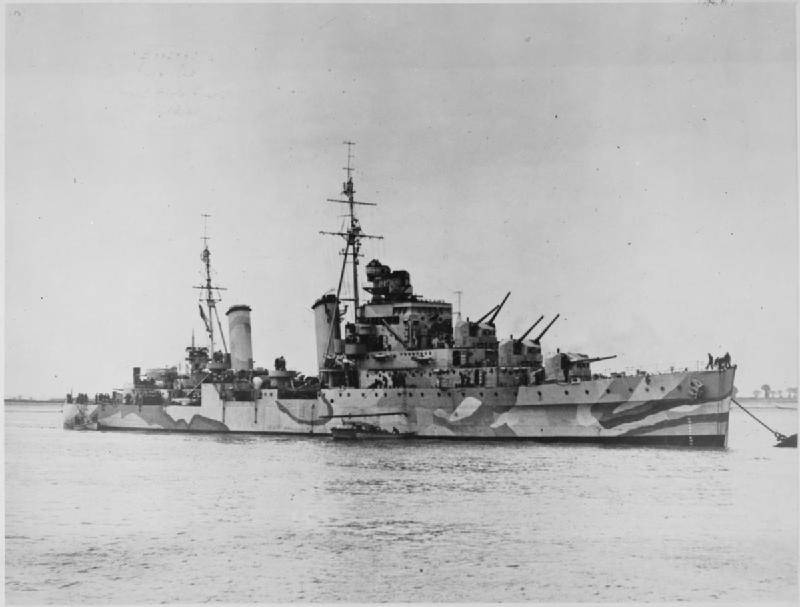
They built ships very quickly, at several shipyards at once, so all cruisers got up very quickly. The ships were laid down in 1937-38, and already in 1940 the ships began to be put into operation.
What were these ships?
Reservation. Reservations, as was customary among the British, were very modest. The armor belt had a place to be. 76 mm thick, rather small in area, covering mainly the artillery cellars and the engine room with 25 mm thick traverses.
The armored deck is standard for light cruisers, 25 mm thick, with a thickening up to 51 mm above the ammunition cellars.
The turrets were armored with 13 mm anti-fragmentation armor.
In general, it is not worth talking about booking as such, but for a ship that was intended for a third role in a squadron battle, it is more than enough.
Power plant and driving performance
The main power plant consisted of four TZA from Parsons and four three-collector steam boilers of the Admiralty type. The boilers are located in pairs in two boiler rooms, in the bow boiler room the boilers were located side-by-side, in the aft tandem, TZA - in two engine rooms.
The power plants produced a total power of 62 hp, which, according to the project, was supposed to provide maximum speed with a standard load of 000 knots and 32 knots at full load.
The cruising range was 1500 nautical miles at 30 knots, 2440 nautical miles at 25 knots, 3480 nautical miles at 20 knots and 4400 miles at an economical speed of 12 knots.
The crew of the Dido-class cruisers was about 500 people. It was noted that habitability was sacrificed to the combat characteristics of the ships, which were famous for their large overcrowding, small living space and poor ventilation of living quarters.
weaponry
The main caliber of the cruisers was supposed to consist of 5,25 "(133 mm) universal caliber guns, identical to those installed on the King George V battleship.
This was supposed to reduce the problems with the supply of ammunition, in fact, everything turned out to be quite difficult.
However, on the cruisers, the Mk.I "battleship" turret mounts were replaced by the Mk.II, which were simpler and lighter. Another difference between the towers was that there were no turret reloading compartments for ammunition. On the one hand, this reduced the safety in battle, on the other, it allowed to increase the ammunition.
The 133-mm gun provided a 36,3-kg projectile with a firing range of up to 22 m and an altitude reach of 000 m. The rate of fire was 14-900 rounds per minute.
In general, the weapon, about which I would like to say a few words, was quite good. And for light surface ships from the destroyer and below, it was simply gorgeous. But having forgiven the planes, let us doubt it.
Yes, the elevation angle of 70 degrees was fine and allowed, if not everything, then almost everything. But the trouble with this gun was that there was only one type of fuse for the projectiles - mechanical, with manual presetting of the distance. That is, in fact, the distance setter was always one shot late.
Considering that, as practice has shown, the guns managed to fire TWO shots against low-flying torpedo bombers and mastheads, at best, the effectiveness was low. And the British had a radar fuse only towards the end of the war.
By the way, the "Prince of Wales" was also armed with 133-mm universal guns. And how did it help him against the Japanese torpedo bombers?
In addition, there was another problem: the low rate of horizontal guidance, only 10-11 degrees per second. This was also an unpleasant moment, although by the end of the war the British engineers were able to solve it, and the battleship Vanguard had already received modernized towers, which had a rotation speed of 20 degrees per second.
By the end of the war, a modification of guns with a higher rate of fire appeared, an automatic machine appeared for setting the fuse delay. At the end of the war, part of the ammunition was made up of shells with a radio fuse.
Ten guns in five towers, universal mountings, which made it possible to fire at both surface and air targets - this is quite strong.
Three towers were in the bow, two in the aft. This is according to the project. But problems with the number of free 133-mm guns resulted in the fact that a number of ships (Dido, Bonaventure and Phoebus) entered service with four turrets, and two more cruisers (Scylla and Charybdis) were equipped with 114-mm universal guns of the previous generation.
Anti-aircraft weapons
History cruisers like "Dido" - the history of rearmament. Initially, the ships were armed in different ways.
The first cruisers in the series received a 102-mm anti-aircraft gun. One thing. Since it did not carry any special value at all, already in 1941 all the cruisers lost it. The exception was "Charybdis", from which the gun was removed in 1943.
40-mm quad-pom-pom anti-aircraft guns.
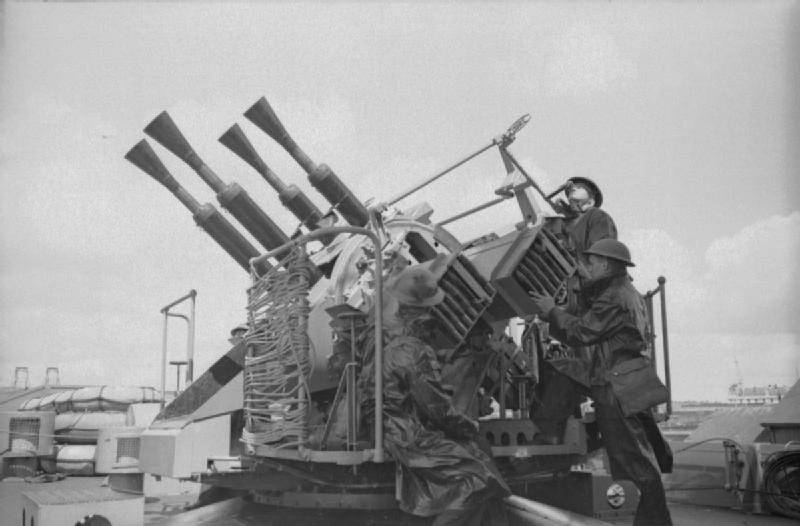
A couple of these uncomfortable monsters were carried by all the ships, and some of them were still single-barreled. In 1942, on the Cleopatra, and in 1943 on the Charybdis, the single-barreled 40-mm "pom-poms" were replaced by 5 and 11 single-barreled 20-mm "erlikons".
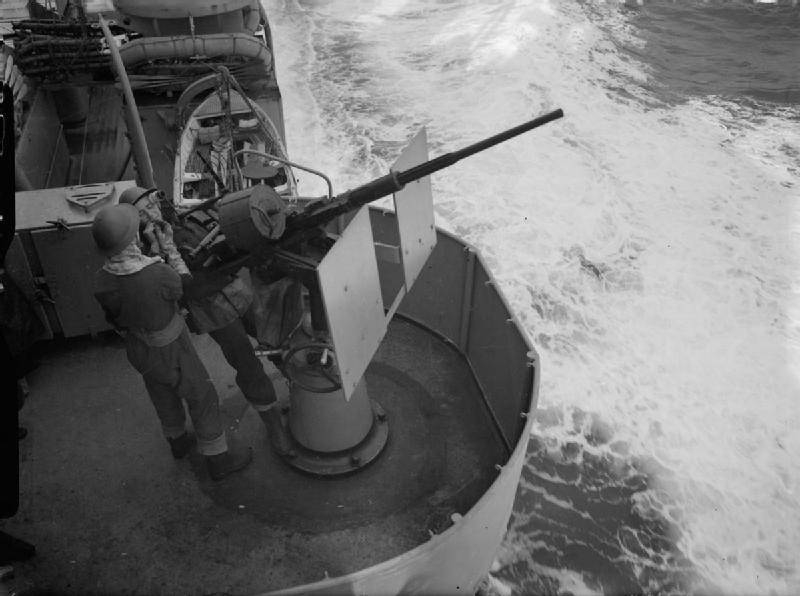
Over the course of the war, the number of Erlikons increased steadily.
In 1943, there were 3 quad pom-poms on Phoebe, and in 1944, two quad poms on Cleopatra were replaced by 3 quad Bofors 40-mm / 56.
In 1944 and 1945 single-barreled "bofors" appeared on "Sirius" and "Argonaut", 4 and 7, respectively.
12,7-mm quadruple installations "Browning" in 1941 were removed from "Dido", "Phoebe", "Evriala", "Hermione".
In 1941, the fifth standard 133-mm Q turret was installed on the Dido, and on the Evrial, Argonaut, and Cleopatra this turret, on the contrary, was removed and the Erlikon was added instead.
The re-equipment of the ships went on all the time. The surviving cruisers met the end of the wars in the following configurations:
Phoebus: 3 x 4 40mm Bofors and 16 20mm Erlikons.
Dido: 2 x 4 40mm pom-poms and 10 20mm erlikons.
Euryal: 3 x 4 40mm Pom-Poms and 17 20mm Erlikons.
Sirius: 2 x 4 40-mm pom-poms, 4 x 1 40-mm Bofors and 7 x 1 20-mm Erlikons.
Cleopatra: 3 x 4 40mm Bofors and 13 20mm Erlikons.
"Argonaut": 3 x 4 40-mm pom-poms, 7 x 1 40-mm beofors and 16 20-mm Erlikons.
In general, we can say that the anti-aircraft armament of ships can be considered close to ideal.
The mine-torpedo armament consisted of two 533-mm three-tube torpedo tubes.
All cruisers were equipped with radar types 279 or 281, 284 when they entered service.
The history of the use of Dido-class cruisers is a history full of battles. The fact that the end of the war was met by half of the list of ships already speaks volumes. You can write a separate story about each of the ships, but now you have to limit yourself to squeezing out their service records.
"Dido"
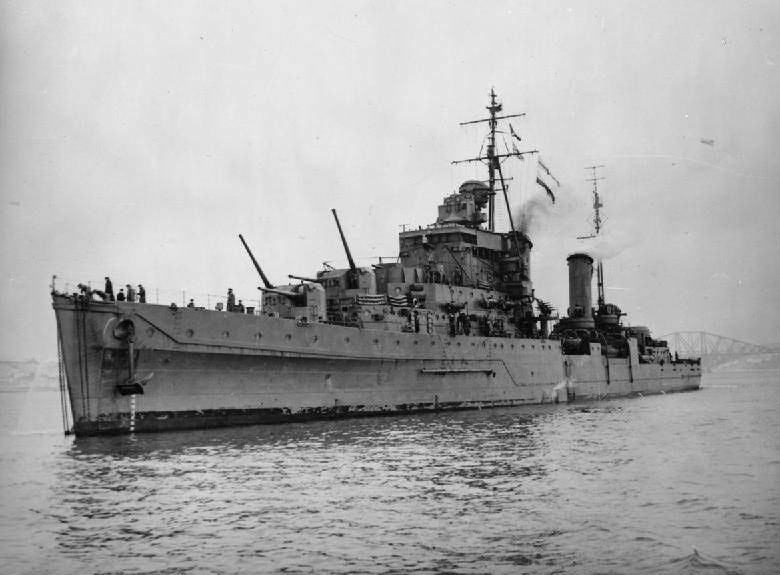
In 1940 he took part in the search for the "Admiral Scheer" in the Atlantic.
In 1941 he took part in Operation Claymore "for the landing of troops on the Lofoten Islands.
Transferred to the Mediterranean, covered battleships in all operations.
Member of the Cretan operation.
Received severe damage as a result of an aerial bomb hitting tower "B", as a result of which the entire bow group of the main caliber was disabled.
Repaired in the USA, after renovation in 1942, a participant in operations to cover convoys to Malta.
Participated in the Second Battle of Sirte Bay.
Participant in the landing of allied troops in Sicily and in the south of France.
In 1944 he was transferred to the North Atlantic, where he covered convoys.
In 1947 he was transferred to the reserve.
Stripped to metal in 1957.
"Bonaventure"
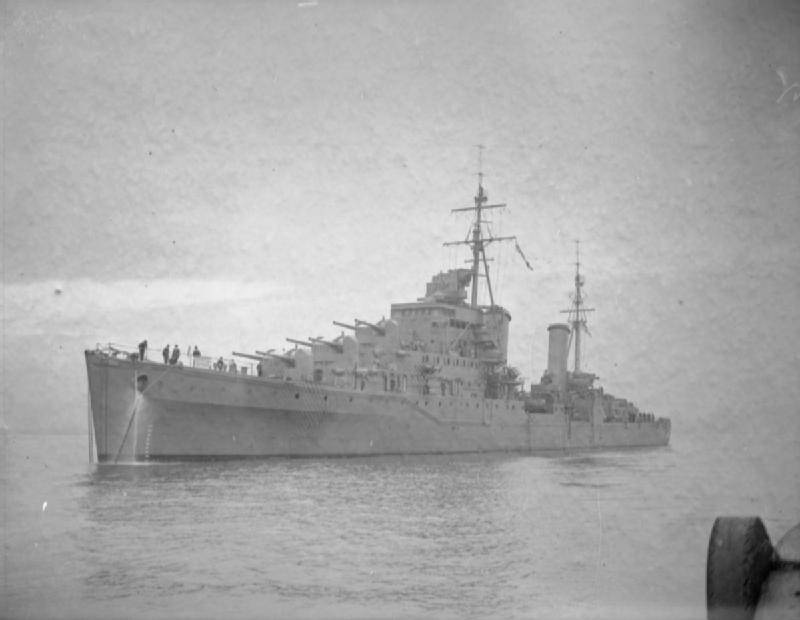
He received his baptism of fire in November 1940 in a battle with the "Admiral Hipper", who was trying to intercept a British convoy at Cape Finistre.
In December 1940, he discovered and sank the German ship Bremen.
He was transferred to the Mediterranean Sea, where he took part in escorting convoys to Malta. Participated in the battle with Italian destroyers and the sinking of the destroyer "Vega" in January 1941.
March 30, 1941, accompanying another convoy, received two torpedoes from the Italian submarine "Ambra" and sank within a few minutes.
"Naiad"
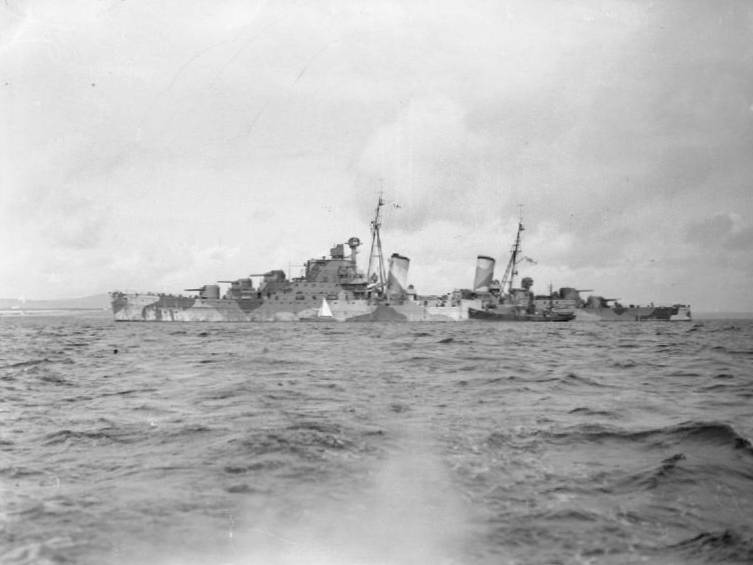
From the beginning of the war, he was engaged in escorting convoys in the North Atlantic. Then he was transferred to the Mediterranean.
Member of the Cretan and Milo operations. Received damage from enemy aircraft.
Covering convoys in the direction of Malta. During 1941-42 he carried out 11 postings.
Participant in the First Battle of Sirte Gulf.
On March 11, 1942, while returning to base, the cruiser near Sallum was torpedoed by the German submarine U-565. Torpedoes hit the middle of the starboard side of the cruiser, and she sank.
"Phoebus"
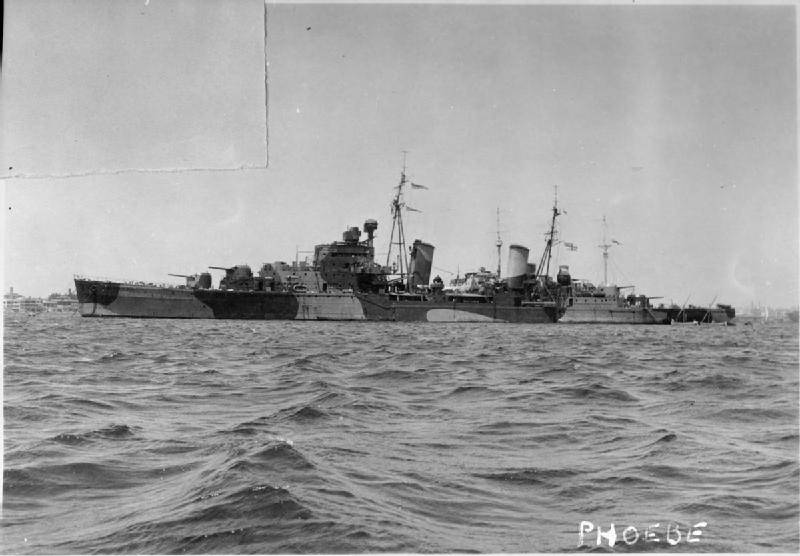
In 1940 he took part in a convoy to the Middle East. Participated in the shelling of Tripoli, evacuated troops from Kalamata, covered convoys to Malta.
Member of the Cretan and Syrian operations.
On August 27, 1941, near Bardia, it was damaged by a torpedo during an attack by Italian torpedo bombers, when it was going to support Tobruk. The repairs went on until April 1942.
Returning to service, he took part in Operation Pedestal (Malta).
Then he was sent to the Indian Ocean to intercept the German blockade-breakers.
On October 23, at the transition from Simonstown to Freetown, the cruiser near Pointe Noire, (Belgian Congo), received a torpedo hit from the German submarine U-161. Repaired again in the USA.
He again ended up in the Mediterranean Sea, participated in the Dodecanese operation in Greece.
In 1944 he took part in the landing in Anzio (Italy).
In 1945 he was transferred to the east, where he took part in operations against Japan in Burma and Thailand.
Stripped to metal in 1956.
"Evrial"
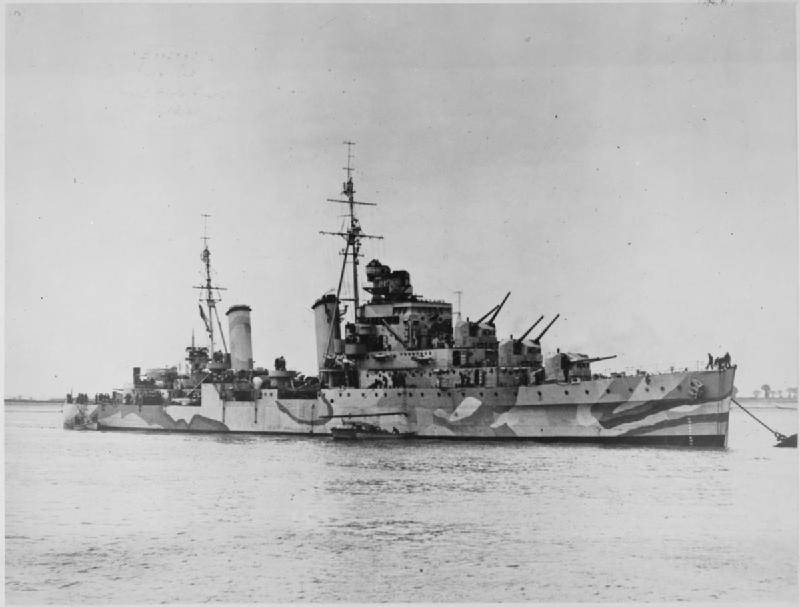
Participant of Operation Halberd on escorting Maltese convoys.
He fired at Derna, the coast of Cyrenaica, Barda.
Participant of 1 and 2 battles in Sirte Bay.
He took part in all Maltese operations.
In 1943 he was transferred north and took part in operations in Northern Norway.
In 1944 he was transferred to the Pacific Ocean, took part in operations against Japan, based in Sydney (Australia).
Disassembled for metal in 1956.
"Sirius"
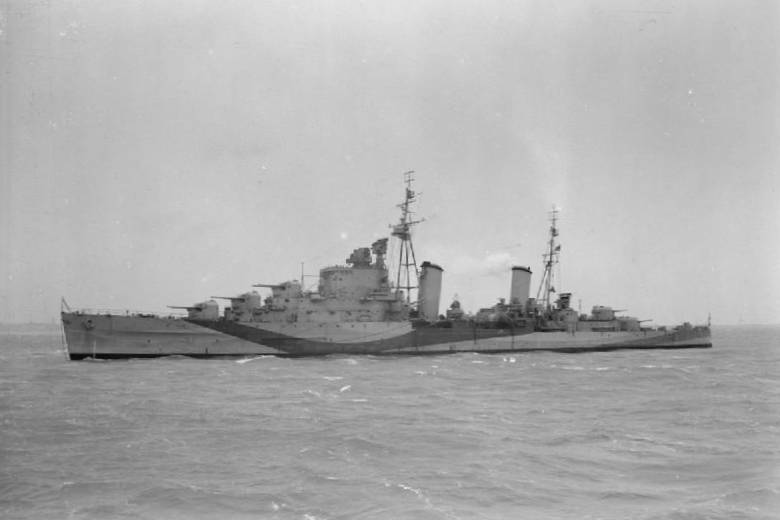
Operations for escorting convoys to Malta.
Indian Ocean Patrol.
Landing in North Africa (Operation Torch).
Member of the Allied landings in Sicily in 1943.
He fired at Solerno and Taranto.
Participant in the destruction of a German convoy on August 6, 1943 in the Aegean Sea.
He covered ships landing troops in Normandy in May 1944.
In July 1944 he took part in the landing of troops in southern France.
After the war, he served for some time in the Mediterranean.
Disassembled for metal in 1956.
"Hermione"
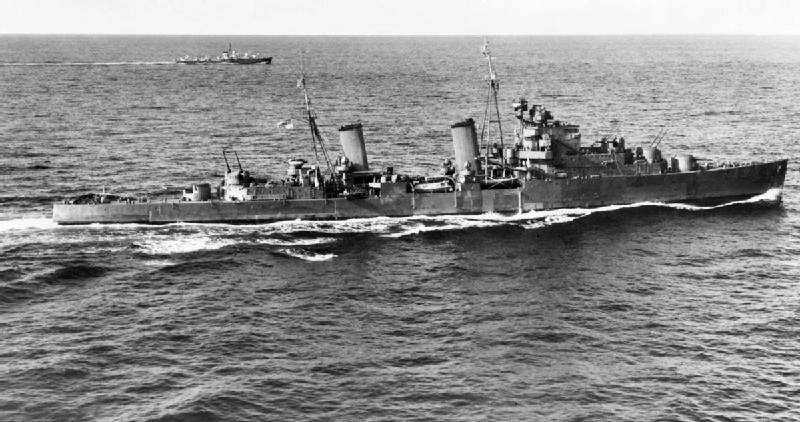
He started the war in the Mediterranean, where he accompanied the Maltese convoys.
Participant in the landing of troops in Madagascar.
On the night of June 16, 1942, south of Crete, it was torpedoed by a German submarine U-205 and sank.
"Cleopatra"
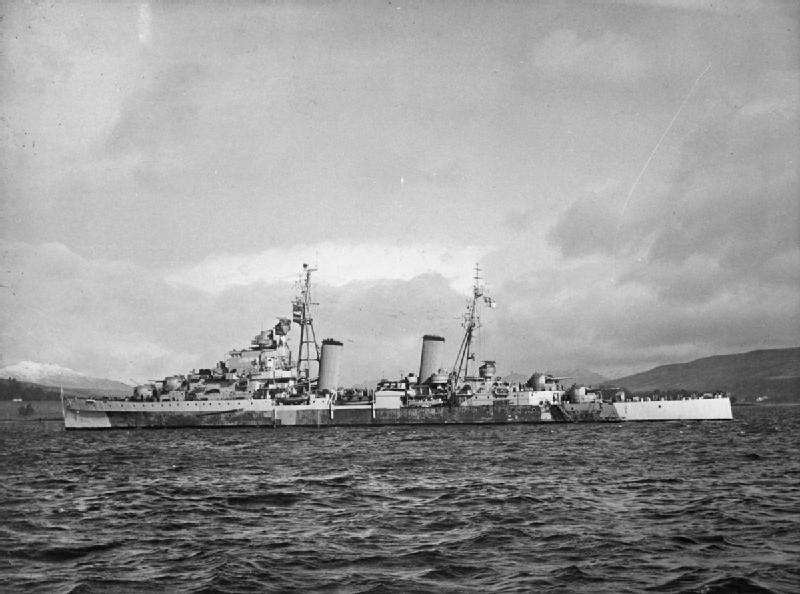
He began hostilities in 1942 with the hit of a 500-kg bomb. After repairs, it shelled Rhodes
Member of the Maltese convoys.
Participant in the Second Battle in Sirte Bay.
He took part in the Syrian campaign.
July 16, 1943 received a torpedo hit from the Italian submarine "Dandolo".
Overhauled in the USA.
After repairs, he was sent to the Pacific Ocean, where he served until 1946.
Disassembled for metal in 1956.
"Argonaut"
He began his service in the Northern Arctic, in the operation on Svalbard.
Member of Operation Torch in North Africa.
December 14, 1942 received two torpedoes from the Italian submarine "Mocenigo". The bow and stern limbs were torn off, steering control was lost, 2 of the five towers were out of order. The cruiser remained afloat and was towed to Algeria.
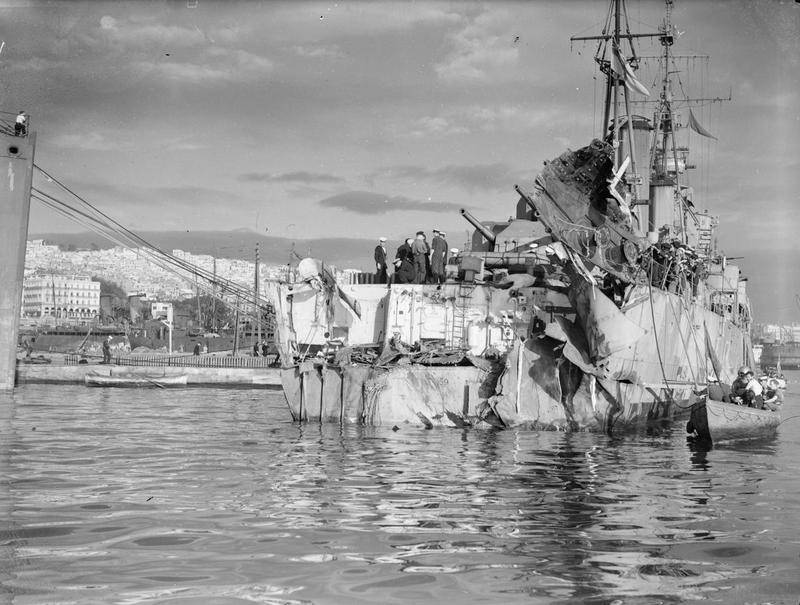
The renovation lasted until 1944.
Participant in the landing of troops in Normandy, Southern France.
In November 1944 he was transferred to the Pacific Ocean, where he took part in operations against the Japanese army.
Participant in operations at Okinawa and Formosa.
Disassembled for metal in 1956.
"Charybdis"
Member of operations in the Central Atlantic and Mediterranean. Covering the Maltese convoys.
Participant in operations for the landing of troops in North Africa ("Torch" and "Trine").
He covered convoys to the Middle East and Alexandria.
Participant in the landing of troops in Sicily.
Participant in the battle in the English Channel on September 22, 1943. The cruiser received two torpedoes from the T-23 destroyer and sank.
"Scylla"
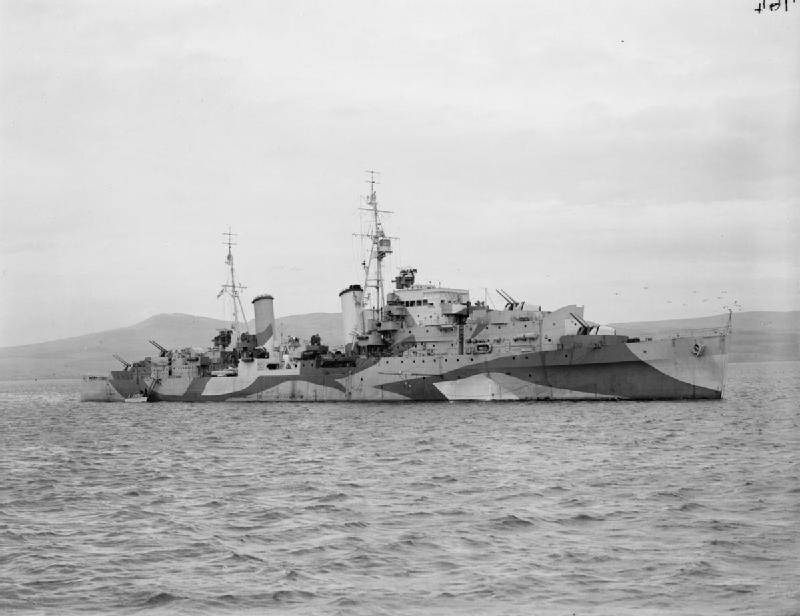
A participant in the escort of the northern convoys PQ-18 and QP-14, rescued the crews of sunken ships.
Transferred to the Mediterranean, participated in the landing of troops in North Africa.
On January 1, 1943, "Scylla" intercepted and sank with torpedoes the German blockade-breaker "Rakotis", coming from Japan with strategic cargo on board.
Then he continued to serve in the Atlantic, escorted convoys, rescued aircraft crews.
Participant in the landing of troops in Normandy in 1944.
June 23, 1944 was blown up by a mine, received significant damage, restoration was deemed impractical. In 1950 it was dismantled for metal.
In fact, Dido-class cruisers have proven to be very useful and successful ships. Using these ships exactly where they could be of maximum benefit. The fact that the cruisers operated mainly in the Mediterranean Sea, where the actions of the German and Italian aviation caused the greatest damage, suggests that the air defense cruiser was in place.
The long service life of a ship during a war is the best indicator that a ship is operating efficiently. The cruisers Dido were effective. There is nothing to add here, the project was more than successful.
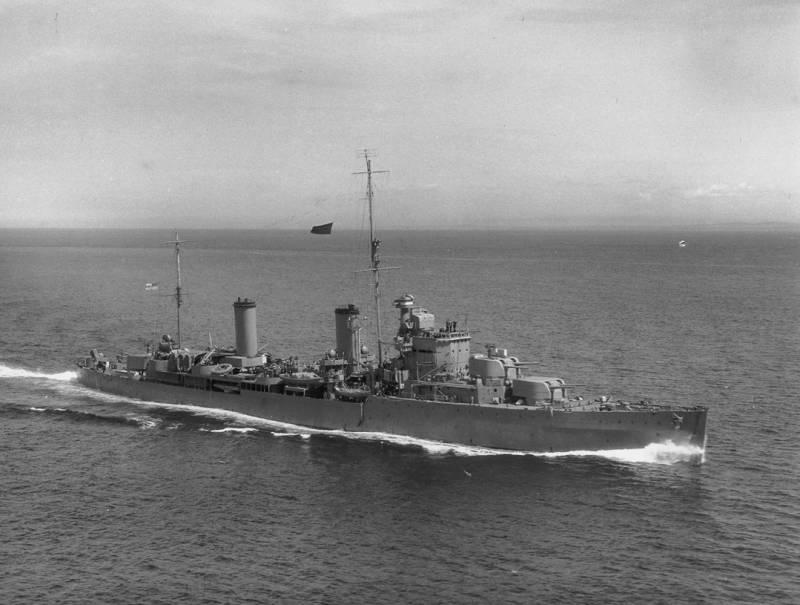
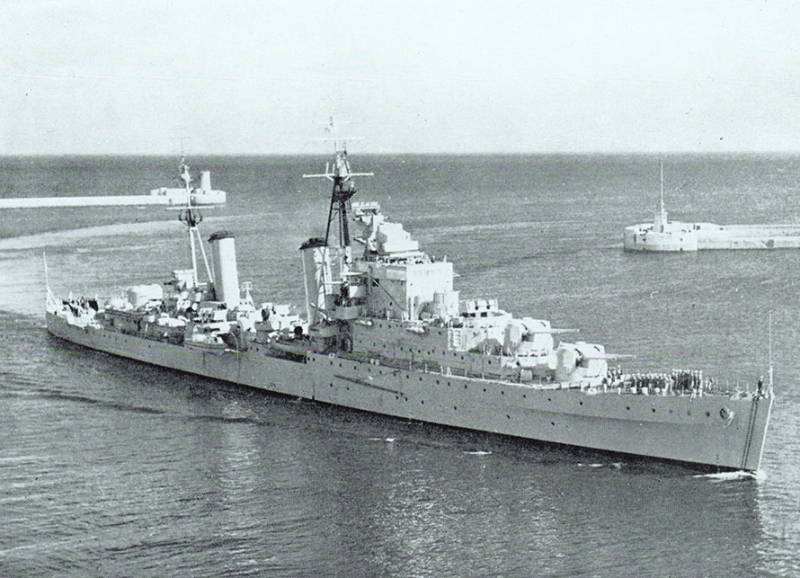
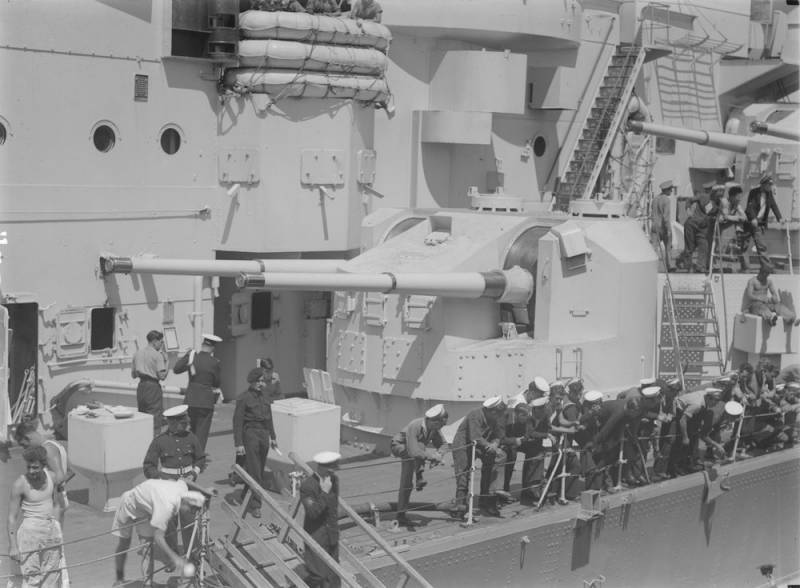
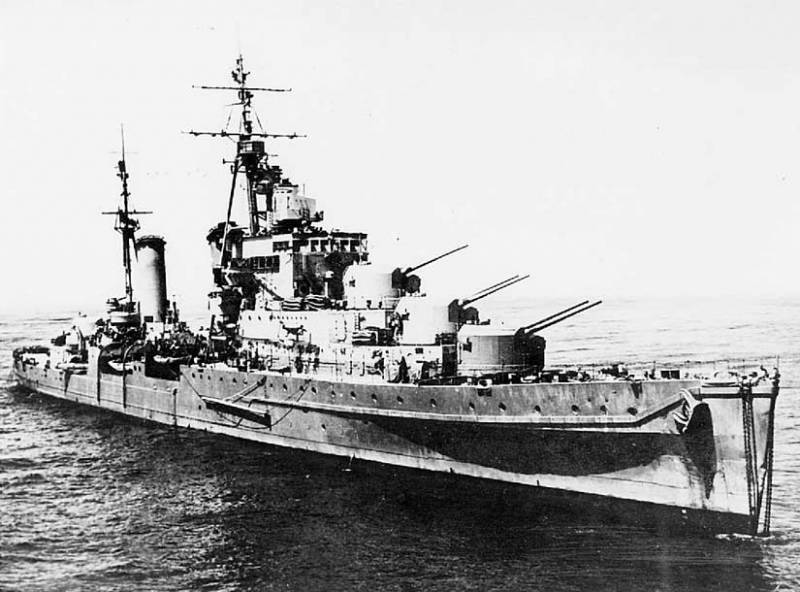
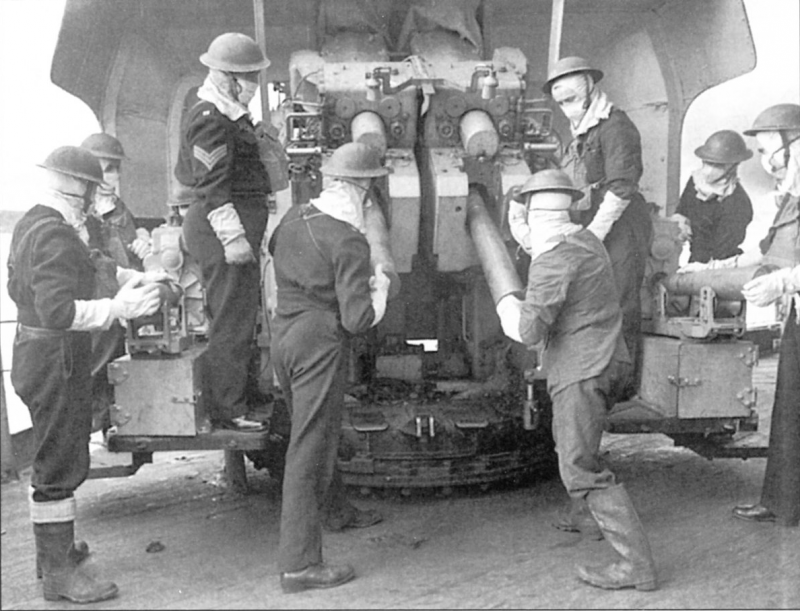
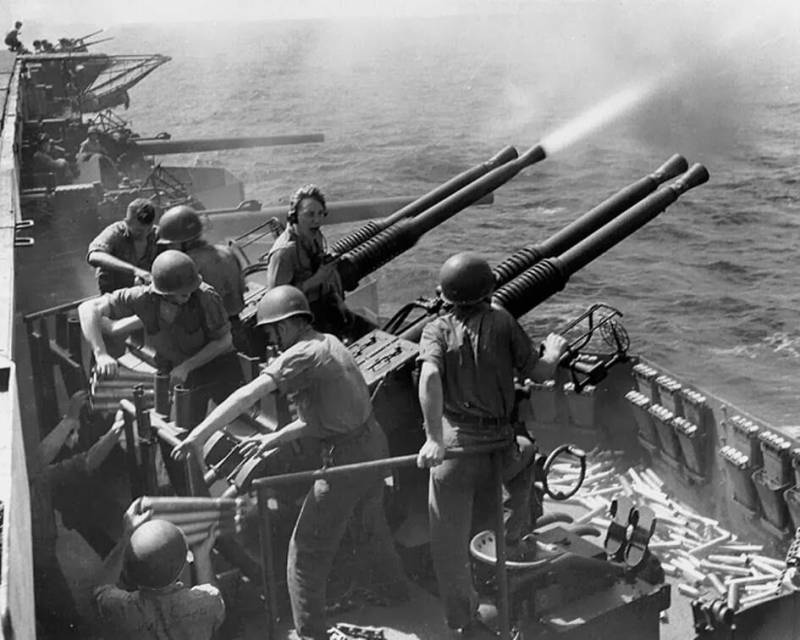
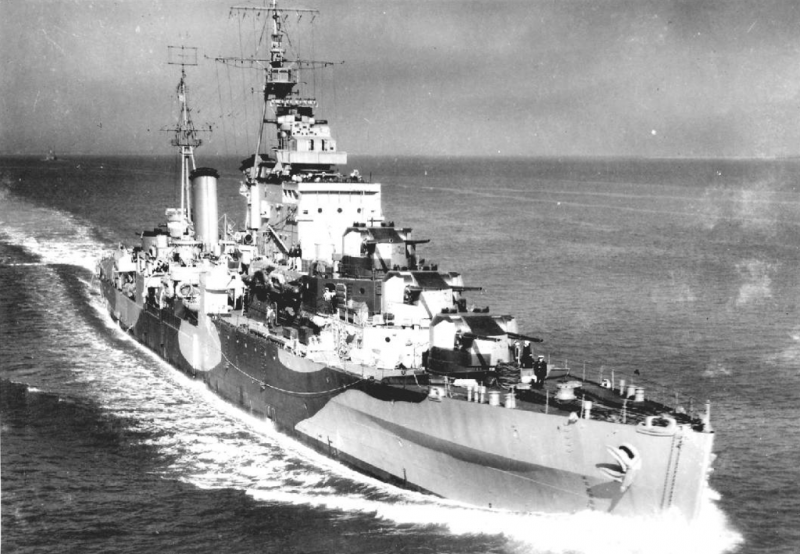
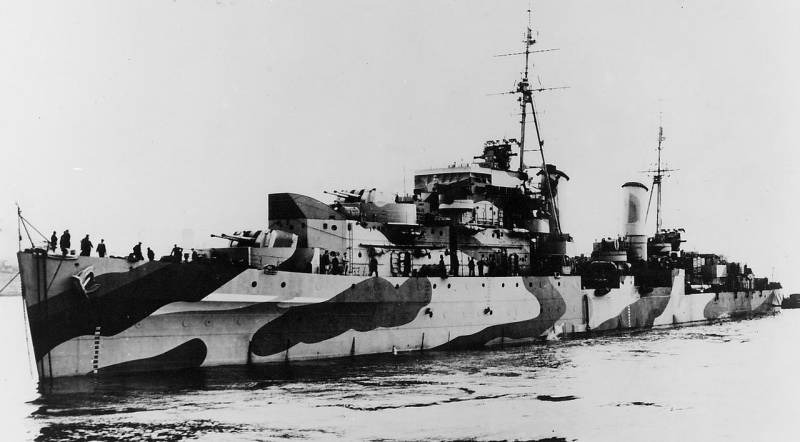
Information